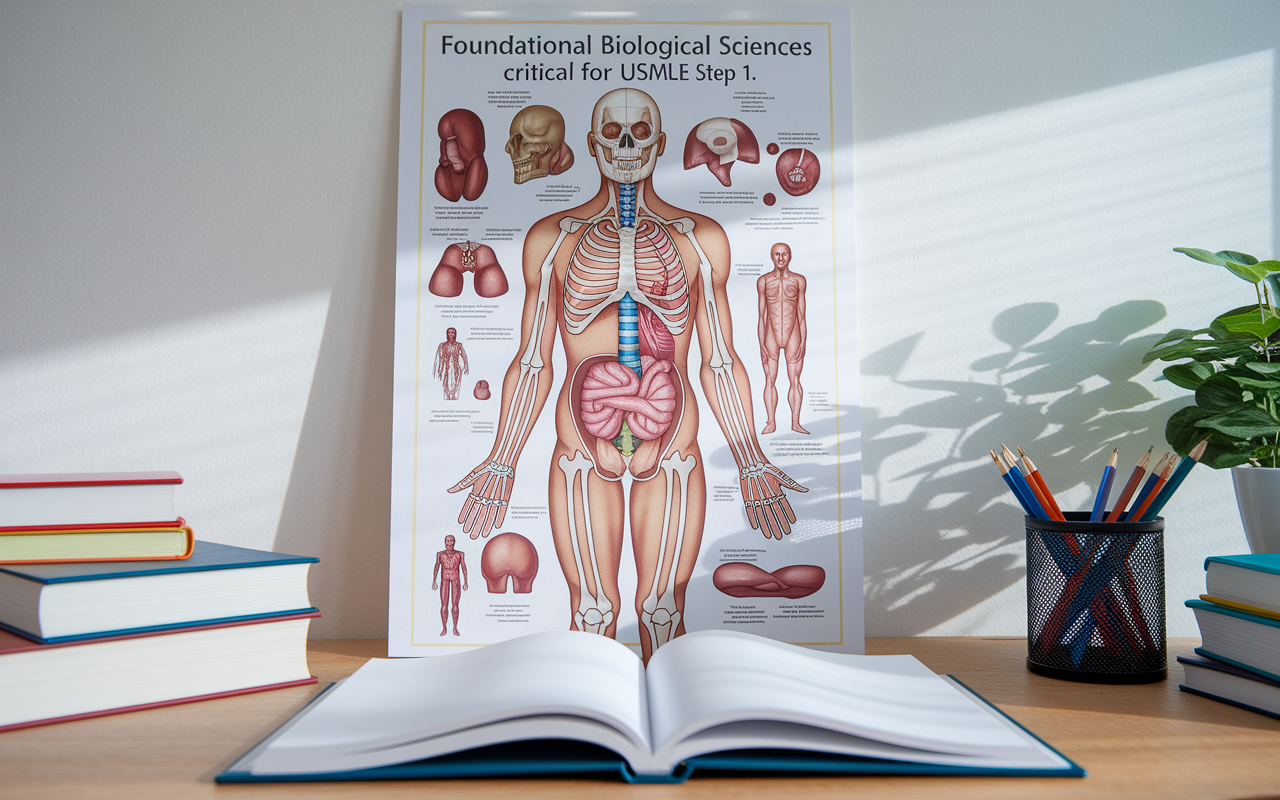The Ultimate Guide to Crafting Your Step 1 Study Schedule
Preparing for the USMLE Step 1 can be a daunting task for any medical student. The exam is crucial in testing your understanding of the foundational medical sciences and plays a significant role in determining your residency options. Crafting a personalized and efficient study schedule is essential to successfully mastering the content and managing your time effectively. This guide aims to provide you with a comprehensive roadmap to create an effective Step 1 study schedule tailored to your individual learning needs and preferences.

Table of Contents
- Understanding the USMLE Step 1 Exam
- Assessing Your Starting Point
- Setting Study Goals
- Creating Your Study Schedule
- Choosing Study Resources
- Incorporating Practice Questions
- Monitoring Your Progress
- Final Review Strategies
- Conclusion
- FAQ
1. Understanding the USMLE Step 1 Exam
Before diving into crafting your study schedule, it's essential to understand what the USMLE Step 1 entails. The examination assesses your knowledge of the basic sciences, including anatomy, biochemistry, behavioral sciences, microbiology, pathology, pharmacology, and physiology.
Format and Timing: The exam consists of 280 multiple-choice questions divided into seven 40-question blocks. You will have 8 hours to complete the test.
Content Outline: Familiarize yourself with the Official Content Outline provided by the National Board of Medical Examiners (NBME) to understand the breakdown of topics and their respective importance.

2. Assessing Your Starting Point
Before creating a study schedule, it’s important to assess your current knowledge and skills.
Identify Strengths and Weaknesses: Take a diagnostic test to identify areas where you are strong and those in need of improvement. Also, reflect on your academic performance in related courses.
Evaluate Your Learning Style: Understanding how you learn best (visual, auditory, kinesthetic, etc.) can help you select resources and study techniques that work best for you.
3. Setting Study Goals
Setting clear and achievable study goals is paramount in keeping you motivated and focused throughout your preparation.
SMART Goals: Ensure that your goals are Specific, Measurable, Achievable, Relevant, and Time-bound. For example, "I will complete the first three chapters of my pharmacology resource by next Thursday and do practice questions related to them."
Daily, Weekly, and Monthly Targets: Break tasks into smaller daily and weekly goals. This allows for adjustable progress tracking, ensuring you remain on course throughout your preparation.

4. Creating Your Study Schedule
With an understanding of the exam and your learning needs, it's time to piece together your study schedule.
a. Choose Your Study Length
- Study Duration: The average study period starts around 4 to 6 months before the exam date. However, this may vary based on your familiarity with the material. Decide on a period that works for you and stick to it.
b. Allocate Study Hours
Daily Hours: Depending on your schedule, dedicate a consistent number of study hours daily. Most students find 6-8 hours a day optimal for maintaining focus without burnout.
Own Unique Break Periods: Integrating breaks is vital for maintaining productivity. The Pomodoro Technique is an excellent approach—25 minutes of focused study followed by a 5-minute break. Longer breaks of 30 minutes to 1 hour should be taken after 3-4 hours of sustained studying.
5. Choosing Study Resources
Selecting the right study materials is crucial for effective preparation.
a. Core Resources
First Aid for the USMLE Step 1: This comprehensive review book is a staple for most students preparing for Step 1.
UWorld Question Bank: Known for its high-quality questions and explanations, UWorld provides a realistic simulation of the exam.
SketchyMedical, Pathoma, and Boards and Beyond: Depending on your preferred learning style, these resources offer engaging ways to grasp complex materials through videos and illustrative guides.
b. Customize Your Materials
- Consider Your Strengths: Don't hesitate to look for alternate resources that may better fit your learning style or reinforce topics you struggle with. Sometimes a simple change in perspective can lead to breakthroughs.

6. Incorporating Practice Questions
Practice questions are a key component of your preparation strategy.
Daily Q&A: Allocate a portion of your study time for practice questions daily. Aim for around 30-50 questions, depending on your schedule.
Mixed Questions: Regularly include mixed questions from various subjects to replicate the exam experience.
Analyze Performance: After each practice set, review not just the questions you got wrong but also the questions you got right. Understanding explanations creates a deeper grasp of the material.
7. Monitoring Your Progress
Keeping track of your progress is vital to maintain accountability for your study schedule.
a. Assessments
- Bi-Weekly Tests: Create bi-weekly assessments to measure your retention and understanding of the material. These can be in the form of practice exams or review sessions.
b. Update Your Schedule Regularly
- Adjust as Needed: Be flexible with your study schedule. If a particular subject proves more challenging than anticipated, adapt your schedule to allocate extra time towards that area without feeling discouraged.

8. Final Review Strategies
As you get closer to your exam date, it’s time to focus on your final review.
Dedicated Review Phase: Set aside the final month to revisit all major topics. By this time, you should primarily focus on consolidating your knowledge rather than learning new concepts.
Practice Full-Length Exams: Simulate test day by taking full-length exams under timed conditions. This helps with endurance and familiarity with the testing format.
Highlight Weak Points: Identify areas that require last-minute focus based on your performance in full-length practice exams.
9. Conclusion
Crafting an effective study schedule for your USMLE Step 1 is essential for success. By understanding the exam's structure, setting attainable goals, selecting appropriate resources, and tracking your progress, you can optimize your study schedule and set yourself up for exam success. Remember, preparation is a marathon, not a sprint. Stay committed, be patient with yourself, and maintain a balanced approach to ensure success.

FAQ
Q: How long should I study for Step 1?
A: Most students typically study for 4-6 months, but this period may vary based on individual preparation and schedule.
Q: Should I focus on practice questions or review content first?
A: Aim to do both. Utilize practice questions to reinforce review content and gauge your understanding.
Q: How many practice questions should I do daily?
A: Aiming for 30-50 practice questions daily is generally effective. Adjust based on your individual time and comprehension levels.
Q: Can I study effectively in a group?
A: Yes, study groups can provide motivation and insights. Ensure that group discussions remain focused on material that benefits everyone.
Q: Is it okay to adjust my schedule?
A: Absolutely! Flexibility is crucial; adjust your schedule as you track your progress and identify strengths and weaknesses.
By following this guidance, you will be perfectly poised to create a robust study schedule and approach your Step 1 preparation with confidence! For further insights, consider checking out The Ultimate Guide to Preparing for Medical School, which provides additional tips and strategies to navigate your medical journey successfully.

SmartPick - Residency Selection Made Smarter
Take the guesswork out of residency applications with data-driven precision.
Finding the right residency programs is challenging, but SmartPick makes it effortless. Our AI-driven algorithm analyzes your profile, scores, and preferences to curate the best programs for you. No more wasted applications—get a personalized, optimized list that maximizes your chances of matching. Make every choice count with SmartPick!
* 100% free to try. No credit card or account creation required.













